Scottish Sea Fisheries Employment Report
This report details the findings of a new survey of crews on Scottish fishing vessels. It provides new information across a range of indicators such as age, nationality, job tenure and skills.
6. Mobility
To gauge fishermen's mobility between marine industries, respondents were asked whether they had ever worked in another marine industry. Similar proportions - between 21-28% - of crew from all fishing sectors have worked in other marine industries. Nephrops vessels and demersal <24m vessels have a slightly higher proportion (27% and 28% respectively) than the other sectors (Fig. 13).
Figure 13: Response to "have you ever worked in another marine industry?" by key fishing sectors ( n =786)
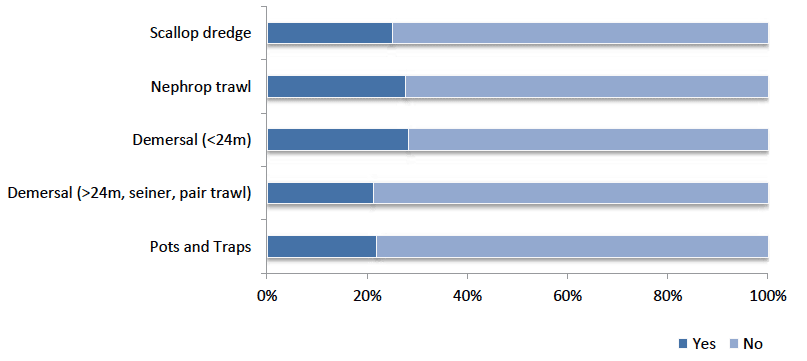
When asked what industries fishermen had worked in, 124 respondents gave further details and the highest proportion was in aquaculture (21%) followed by the merchant navy (18%), Oil & Gas (14%) and then cargo (12%) (Fig. 14). 18% had worked in 'OTHER' industries which are detailed in Table 2. By fishing sector, aquaculture and standby vessels were the main alternative industries for pots and traps crew.
Figure 14: Breakdown of other industries worked in by Scottish crews ( n = 124 )
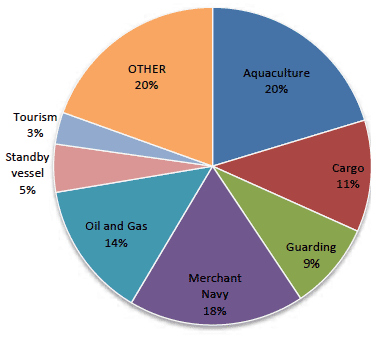
Figure 15: Other industries worked in by crew from key fishing sectors ( n = 124)
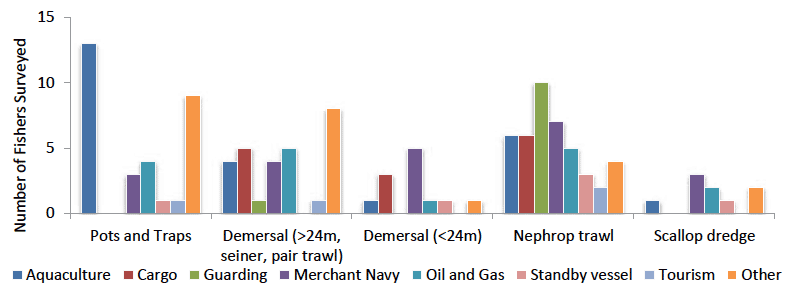
Table 2: Type of past employment grouped as OTHER in figure 16 by key fishing sectors ( n = 19)
| Other | Harbour related activities | Custom & Excise | Marine Engineering | Shore-based engineering | Factory vessel | Ship yard/ building | Renewables |
|---|---|---|---|---|---|---|---|
| Pots and Traps | 3 | 1 | 2 | 2 | |||
| Demersal (>24m, seiner, pair trawl) | 1 | 1 | 1 | 1 | 1 | ||
| Demersal (<24m) | 1 | ||||||
| Nephrops trawl | 1 | 1 | 1 | ||||
| Scallop dredge | 1 | 1 |
Nephrops crews were much more diverse but higher proportions had previously worked in guarding and the merchant navy. Pots/traps and scallop crews did not have backgrounds in cargo or guarding unlike the demersal and Nephrops crews. All the other large grouping of marine employment were present in all fleet sectors (Fig 15). Table 2 presents a breakdown of the OTHER category from figure 14 and 15, and harbour related activities were the most common followed by marine- and shore-based engineering.
Figure 16: Response to "are you willing to work in another marine industry?" by key fishing sectors
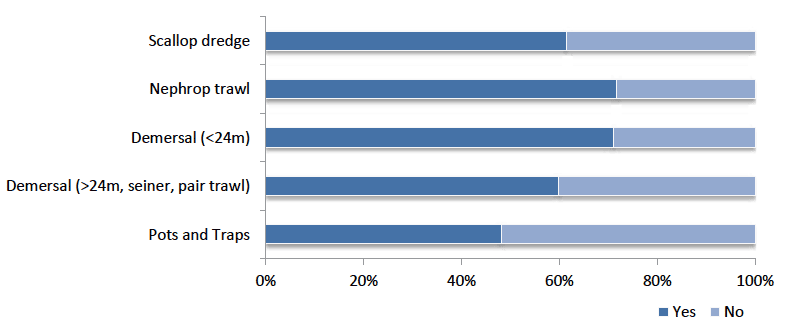
With the exception of pots and traps (48%) over 50% of crew members said they would be willing to work in other marine industries. For Nephrops and demersal (<24m) vessels this proportion was as high as 70% (Fig. 16). Of the 452 respondents who said yes they would be willing to work in another marine industries, only 14 respondents gave examples of what this could potentially be, which were aquaculture, renewables, merchant navy, oil & gas, guarding and tourism.
Figure 17: Response to "do you expect to be crewing in 12 months' time" by key sectors
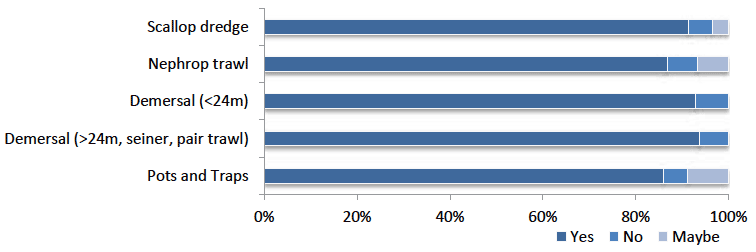
When asked if respondents expected to be crewing in 12 months' time a high proportion in all sectors said yes with the demersal (> 24m, seiner, pair trawl) fleet with the highest rate at 94% and the lowest rate at 86% for pots and traps (Fig. 17).
Lastly on mobility when asked if crew would be willing to work in another locations/ports the majority of crews in the mobile sector were willing to work elsewhere. The proportions of crews who are not willing ranged from 2% in the demersal (<24m) to 25% for the demersal (>24m, seiner, pair trawl) (Fig. 18). For pots and traps a much higher proportion of crew (54%) were not willing to work in another location or port.
Figure 18: Response to "are you willing to work in another location/port?" by key fishing sectors
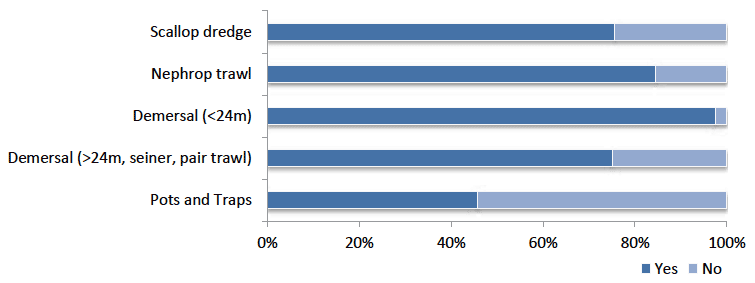
Contact
There is a problem
Thanks for your feedback